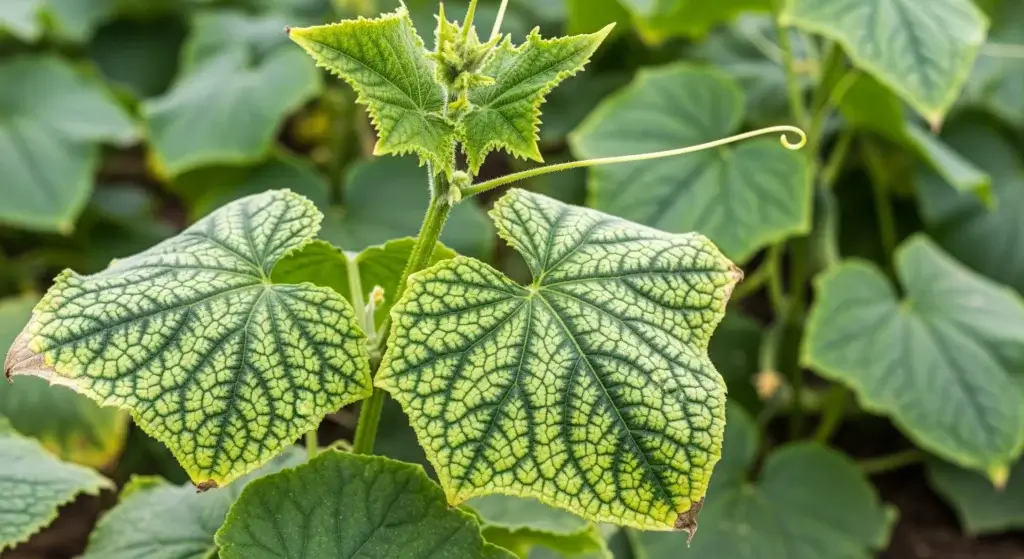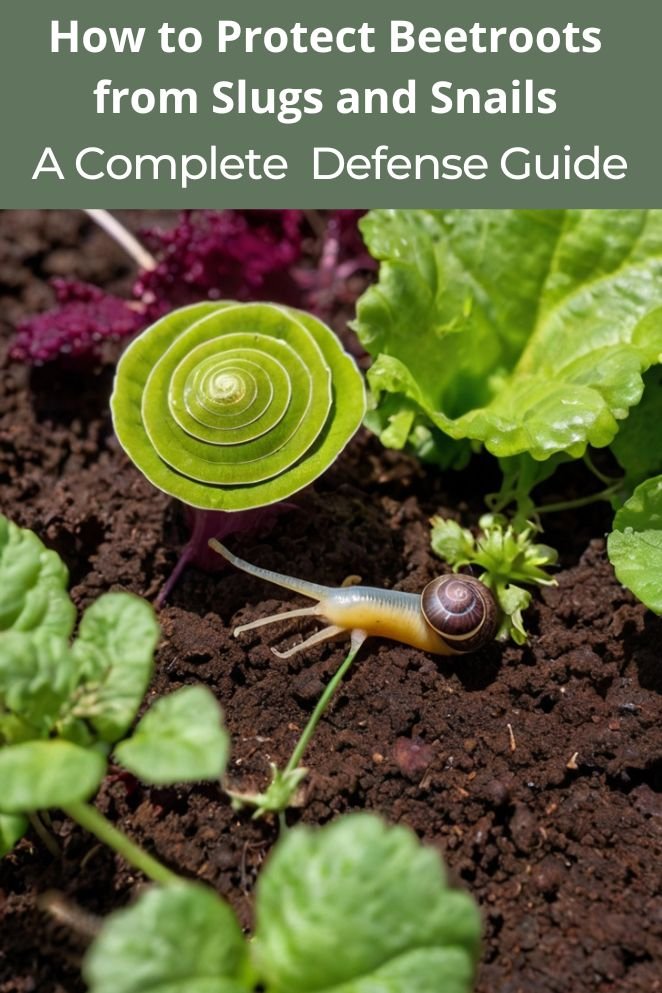
Slugs and snails can destroy your beetroot seedlings fast, leaving holes and slimy trails.
Whether you’re just starting out or a seasoned grower, you need a solid game plan.
Combine prevention, natural repellents, and smart control to keep your beetroot patch slug-proof.
Understanding the Enemy: Why Slugs and Snails Target Beetroots
Slugs and snails don’t randomly show up—they’re obsessed with young beetroot seedlings.
Why? Because those soft, juicy leaves are basically a buffet.
High moisture, sweet flavor—total snack status.
These pests come out when it’s cool, damp, or dark—think rainy nights or cloudy mornings.
During hot, dry weather, they hide under mulch, rocks, and garden junk like sneaky little ninjas.
It’s not just about chewed-up leaves.
Slugs and snails also bite into stems, which opens your plants up to disease and stunts their growth.
Seedlings are especially at risk in their first few weeks, so early protection isn’t optional—it’s the whole game plan.

Physical Barriers: Your First Line of Defense
If you don’t want slugs and snails turning your beets into salad, block them before they attack.
Physical barriers stop them from even getting near your plants—no drama, no slime.
Copper barriers
Copper messes with slugs’ bodies—it gives them a tiny shock when they touch it. Wrap copper tape or wire around your garden bed or pots.
- Make it at least 4 inches wide
- Don’t let leaves hang over the edge—they’ll use them like bridges
Think of copper like an electric fence for bugs. It’s one of the most trusted methods out there.
Protective cloches and collars
Cloches are like mini domes for plants. They block pests and can help protect from cold too.
- Make your own with plastic bottles or clear containers
- Or buy ready-made ones
Slug collars work the same way, just on a smaller scale. Drop one around each beetroot plant like a shield.
Textural barriers
Slugs and snails hate crawling over rough stuff. Lay down:
- Gravel
- Sharp sand (not play sand)
- Crushed eggshells
- Diatomaceous earth
- Coarse coffee grounds
But heads-up—these wash away in the rain. You’ll need to refresh them often. Still, it’s like turning your garden floor into a barefoot LEGO trap.
Natural Deterrents and Organic Solutions
Want to stop slugs without wrecking your soil, killing off ladybugs, or spraying chemicals on your dinner? Good news—nature’s got your back.
These organic methods hit hard without hitting the environment.
Beer traps
Slugs love beer. Seriously.
Take a jar, pour in cheap beer, and bury it so the rim is level with the soil.
The smell pulls them in, they fall in, and that’s it—game over.
Set a few traps around your beetroot patch. It’s like baiting them with an all-you-can-drink bar… that they never leave.
Use nematodes
Nematodes are tiny worms that go after slugs but ignore the rest of your garden crew.
You water them into the soil, and they go full spy mode—finding slugs, getting inside them, and shutting them down from the inside.
Best part? Totally safe for pets, people, and plants. Use early in the season for best results. It’s science, but it’s also kind of wild.
Companion planting
Some plants naturally keep slugs away because they smell weird or feel rough.
Good picks:
- Rosemary
- Thyme
- Mint
Plant them around your beetroot bed. They smell great to us, but slugs treat them like garlic to vampires. Bonus: they help your garden’s ecosystem, too.
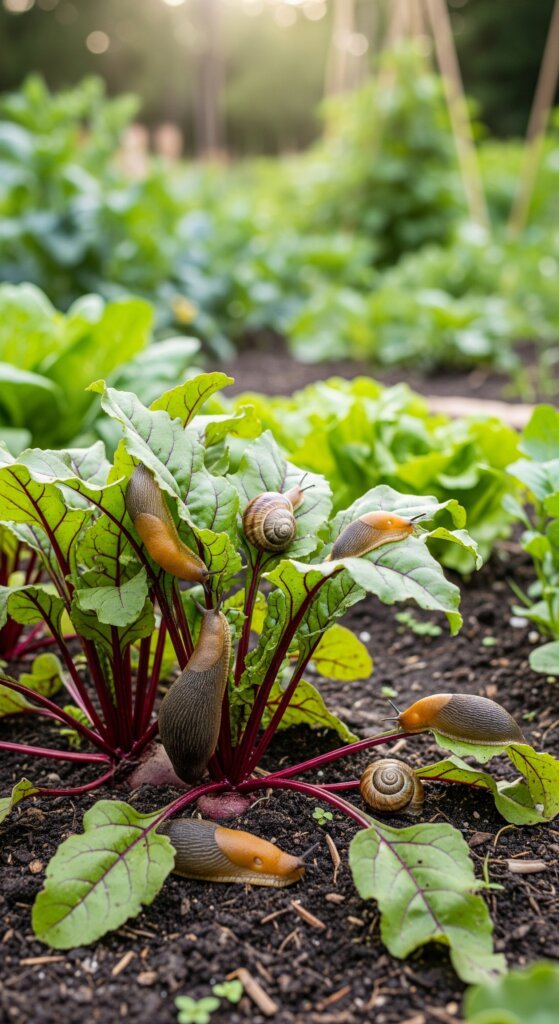
Timing and Environmental Management
If you want to keep slugs off your beets, timing and clean-up matter just as much as traps or barriers.
Slugs love cool, damp spots—so your job is to make your garden less comfy for them.
Plant at the right time
Slugs are most active in wet, cool weather—especially early spring.
So don’t plant your beets when slug season is at its peak.
Wait for a drier window when the sun’s out and natural slug hunters (like birds and beetles) are more active.
It’s like dropping your favorite album when the charts are clear—you get better results with less competition.
Garden hygiene
Slugs hide during the day in shady, damp spots. Give them fewer places to crash.
Do this:
- Clear out leaf piles, weeds, and old pots
- Keep grass trimmed around your beet bed
- Don’t let stuff sit around where slugs can sneak under
Watering strategies
Slugs show up when it’s wet—especially at night. So flip your watering schedule.
Water in the morning.
That way, the soil dries before sunset, and slugs lose their party zone.
Your beets still get water, but you don’t send slugs an invite.
Advanced Protection Strategies
If slugs and snails keep wrecking your beets, it’s time to level up.
When basic tricks aren’t cutting it, bring in the big guns—smart combos, decoys, and night patrol.
Integrated pest management
Integrated Pest Management (IPM) means stacking your defenses.
Use everything at once:
- Copper tape
- Beer traps
- Nematodes
- Rough mulch
- Hand-picking
It’s like building a superhero team—each method covers what the others miss.
Trap crops
Slugs love lettuce and hostas even more than beets. So plant them away from your beets. Think of them as bait.
Slugs go for the decoy first. Then you swoop in, pick them off, and dump them far from your garden.
It’s kind of like setting up a fake party to distract the villains.
Seasonal monitoring
Slugs and snails show up at night. So grab a flashlight and check your garden after dark.
If you’ve had problems before, don’t wait for chewed leaves—go looking.
Even a few nights of patrol during slug season can make a big difference.
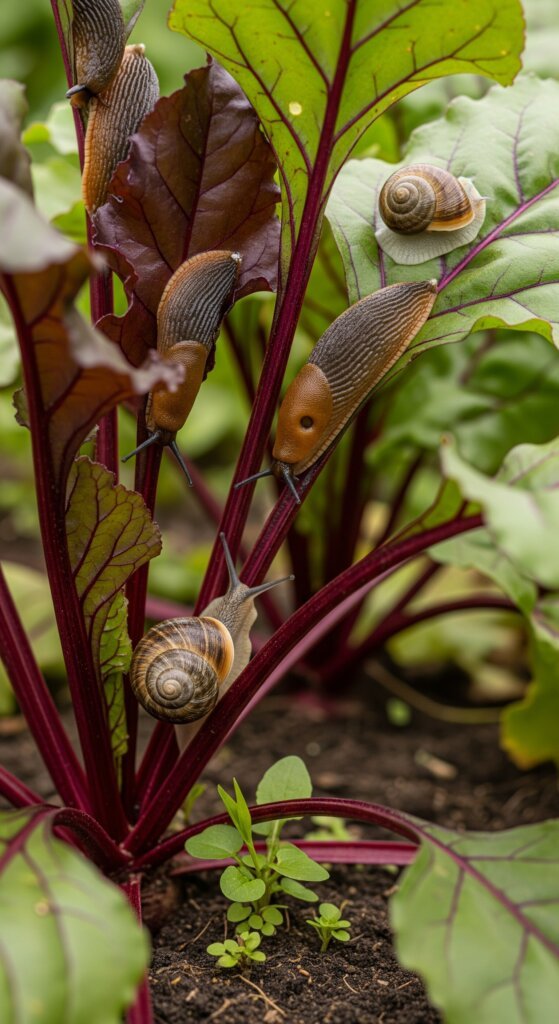
Creating a Slug-Resistant Growing Environment
If you really want to beat slugs long-term, don’t just fight them—make your garden a place they don’t even want to be.
Here’s how to shape your growing space so slugs slide the other way.
Encouraging natural predators
Slugs have enemies—invite them in.
- Plant hedges, berry shrubs, and small trees to attract birds like blackbirds and thrushes.
- Make space for frogs, ground beetles, and hedgehogs.
These guys love to snack on slugs. You just build the habitat—they’ll handle the rest like nature’s pest control squad.
Soil management
Slugs thrive in soggy soil. So don’t give it to them.
- Improve drainage with compost or organic matter
- Raise your beet beds if needed
- Avoid overwatering
Microclimate modification
Design your garden to throw slugs off their game.
- Avoid thick, damp mulches they can hide under
- Space your plants for airflow
- Use rougher textures and drier zones around beets
Maintenance and Long-Term Success
Protecting your beets from slugs isn’t a one-and-done job.
You’ve got to stay sharp with regular checks, quick fixes, and smart changes all season.
Check your garden often
Make slug spotting a habit. Look for slimy trails, chewed leaves, or the pests themselves.
Catching them early means less damage and less stress.
Seasonal strategy adjustments
Slug strategies that work in cool spring might flop in hot summer.
Adapt your defense as weather and slug numbers shift. Flexibility wins the game.
Learn and level up
Write down what works and what doesn’t. Note weather, slug activity, and your best slug-busting moves.
Over time, you’ll build a custom playbook for your garden.
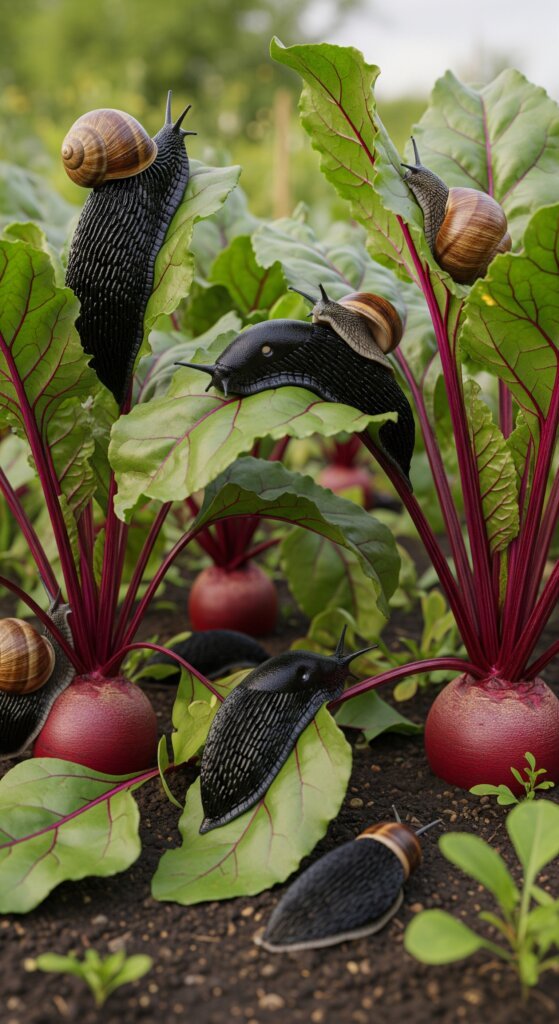
Conclusion
Beet slug control takes a combo of barriers, natural tricks, timing, and making your garden slug-unfriendly.
No single method works alone.
The best gardeners mix it up, adapt, and stay on guard. Stick with your style, learn as you go, and watch your beets grow strong—no slimy invaders allowed.
Slugs and snails can destroy your beetroot seedlings fast, leaving holes and slimy trails.
Whether you’re just starting out or a seasoned grower, you need a solid game plan.
Combine prevention, natural repellents, and smart control to keep your beetroot patch slug-proof.

